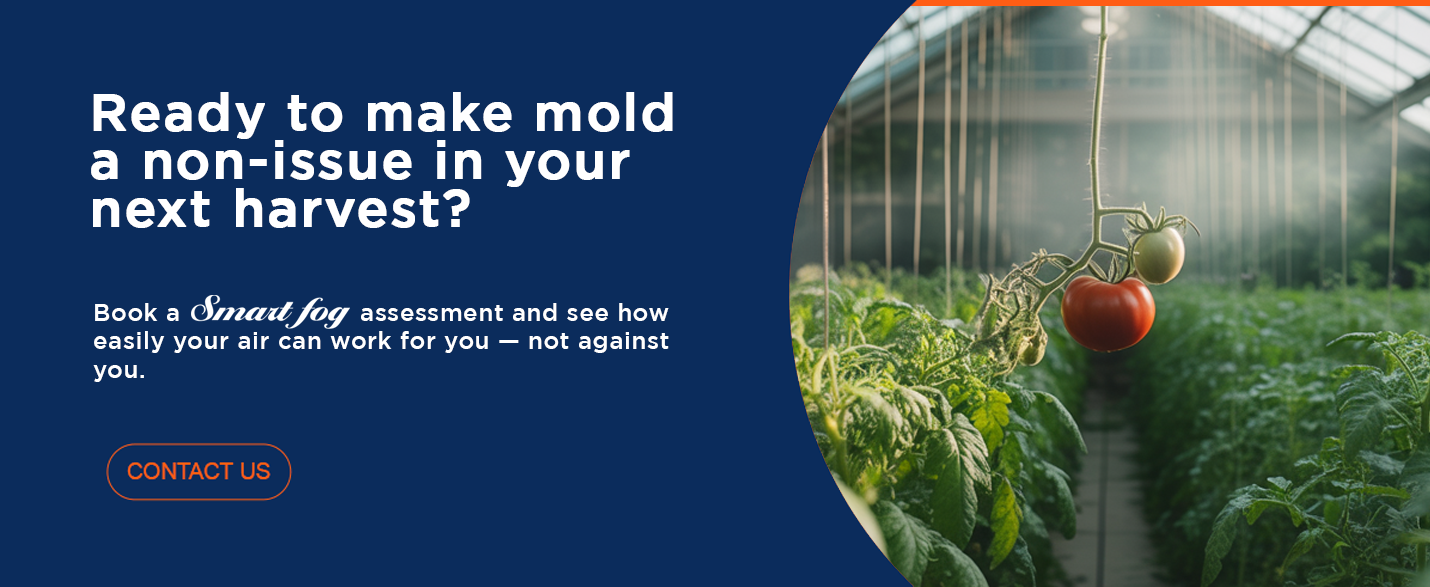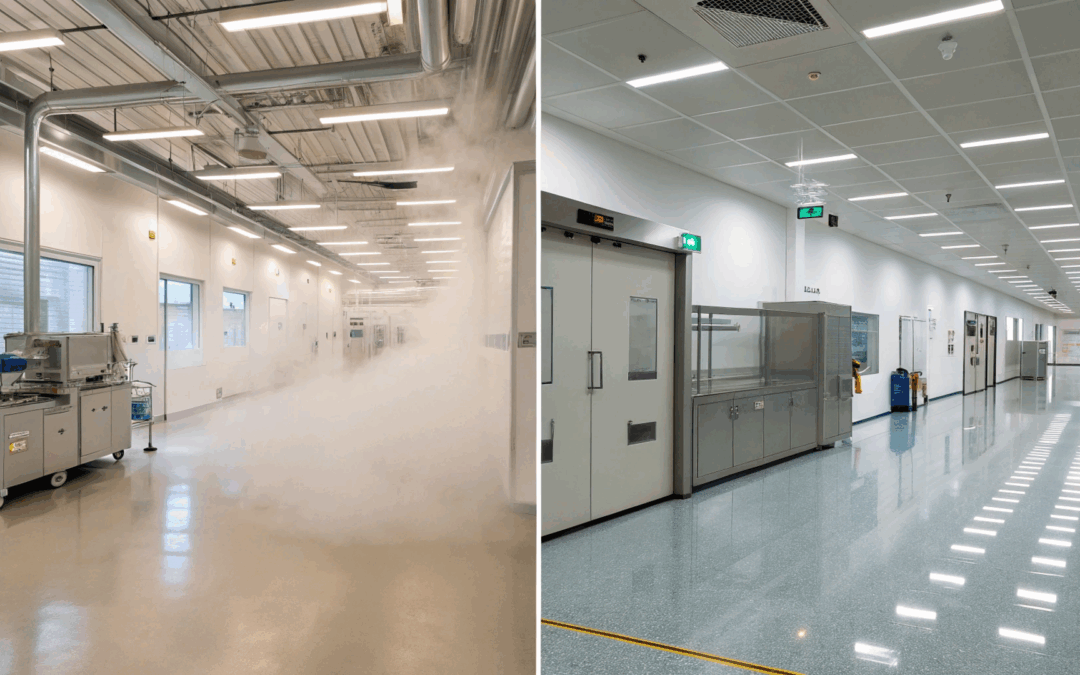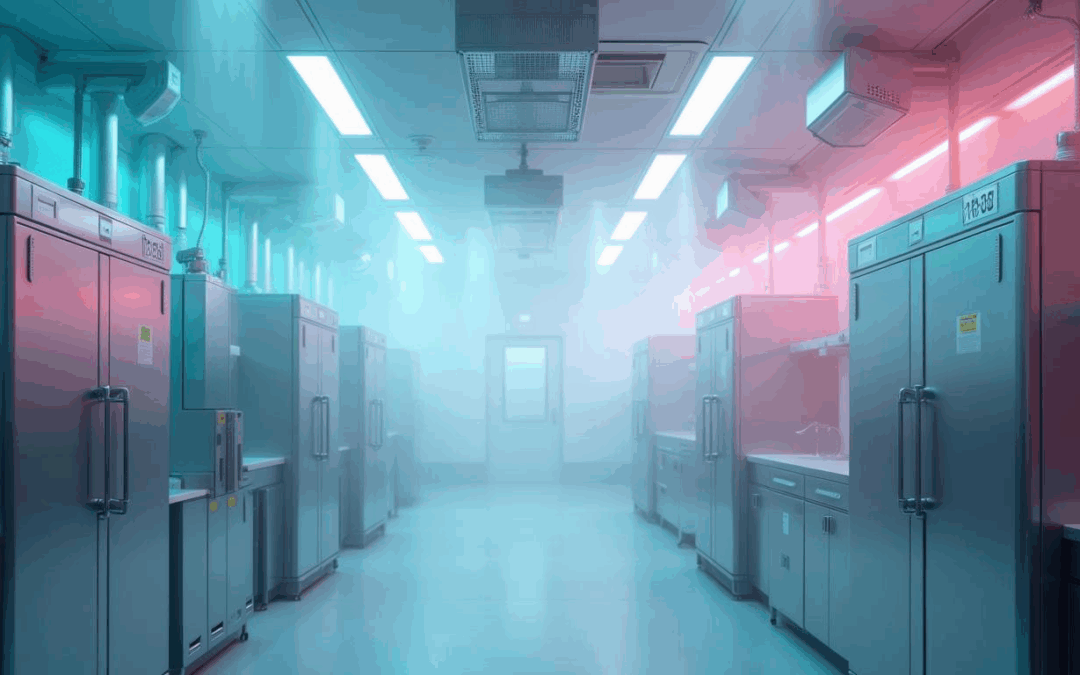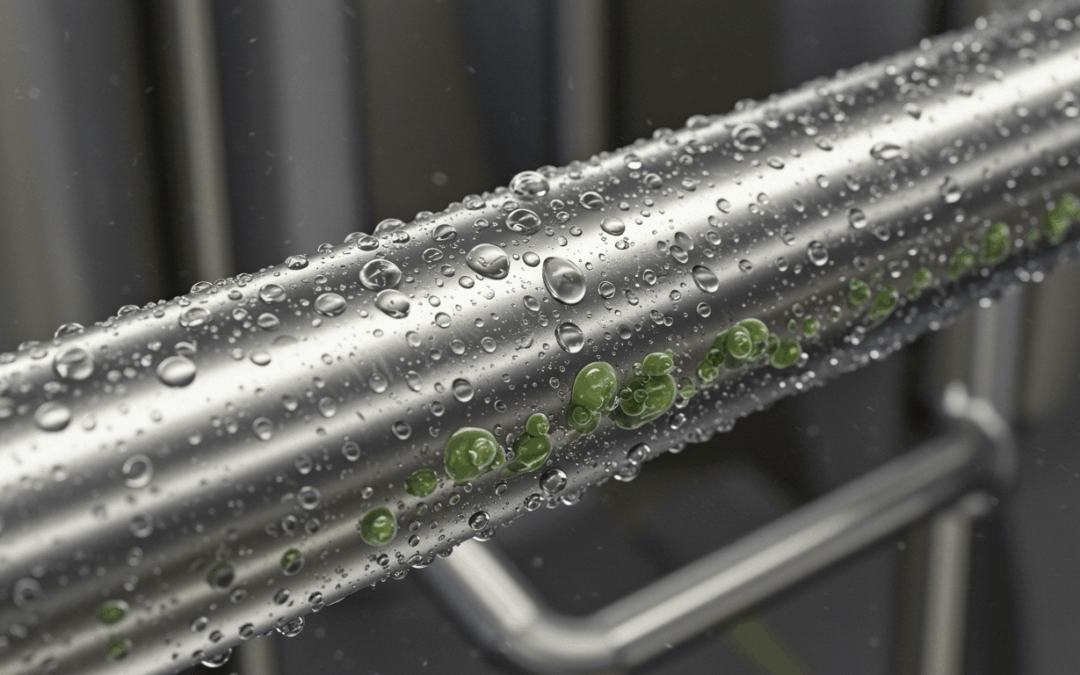If you’ve been running an indoor farm for any length of time, you already know the number one crop killer isn’t bugs, isn’t genetics, and often isn’t even mistakes in fertigation. It’s mold.
Botrytis. Powdery mildew. Downy mildew. Whatever name you give it, fungal pathogens thrive exactly where you’d prefer they didn’t: on your leaves, your buds, your fruits, and deep inside your profits.
Most growers hear the same advice on repeat: “Control your humidity.” That’s absolutely true. But it’s also not the full story — because humidity is just one layer of the problem. Air quality plays a far bigger role than most operations realise.
Let’s walk through why that is, and how dialing in your indoor agriculture environment is about more than just chasing a target RH on your sensor readouts.
The Myth of “Perfect RH” and the Mold Trap
You’ve probably set your controller to keep your grow around 55% RH. Maybe 60% during veg. Lower during flower. That’s textbook, right? And in many ways, it’s correct.
But even if your readout says “55%,” what’s happening five feet away, or up by the lights, or down between your canopy tiers? The truth is, microclimates form everywhere.
LEDs dry out the top leaves while heat from pumps and plumbing raises local humidity by the floor. If your HVAC cycles off for a moment, humidity can spike 5-7% instantly. That’s all mold spores need. They’re opportunists. They wait for those brief RH jumps to germinate, even if your “avehttps://www.smartfog.com/wp-content/uploads/2025/07/whysmartfog-1.pngage” looks fine on paper.
The second issue is that RH alone does nothing to address airborne spores. You might keep your air at a steady 55%, but if every cubic meter is loaded with fungus floating around looking for a home, it doesn’t take long for problems to start.
Why Mold Pressure Is Higher Indoors
In outdoor agriculture, wind and UV light naturally help limit fungal pressure. Indoors, none of those natural defenses exist. Your ventilation actually re-circulates the air, moving spores from one spot to another.
HEPA and MERV filters help somewhat — but only for air that passes through the system. They don’t scrub the air around your canopy, between your trays, or right next to your sensors. So mold gets countless chances to land, grow, and spread.
And because indoor environments are so tightly controlled, pathogens that get in often face no predators or environmental kill factors. They have stable temps, steady humidity, and lush plant tissue — a buffet with no deterrents.
The Static Problem You Didn’t Know You Had
Here’s where it gets even more interesting. If your RH drops even briefly, static rises fast. You know how your hair stands on end in dry air? The same charge builds up in your grow room.
What does that mean for mold? Simple. Static causes dust, fibers, and — yes — spores to cling to leaves and surfaces. Instead of floating past harmlessly, they stick. Right where they can germinate.
Most growers focus on grounding trays or adding anti-static floor mats in packaging areas. But in the grow environment itself, the static problem usually goes unaddressed. That means more fungal spores getting an easy ride straight to your crop.
How Smart Fog Changes the Mold Equation
This is where Smart Fog’s approach is fundamentally different. It’s not just a humidifier. It’s a whole-air solution that manages three big risks at once:
- It keeps RH stable — within ±2% of your target.
This alone reduces the sudden spikes or drops that let mold get a foothold. - It creates a dense field of negative air ions.
Those ions bond with spores and particles, making them heavy enough to fall out of circulation. They can’t float around and find new leaves to colonize. - It neutralizes static in the entire air volume.
So even if some spores are present, they don’t get stuck to your plant surfaces as easily.
The result? A grow environment that’s actively hostile to mold, even if you open doors, run your irrigation, or cycle your HVAC.
Why Filters and UV Alone Aren’t Enough
It’s common for operators to try air filtration upgrades or install UV-C systems in ducts. Those can help — but only with air that physically passes through them. In many grow rooms, a large volume of air moves around trays and racks without ever touching a filter.
Likewise, UV lights require direct line-of-sight to be effective. Mold spores tucked behind a leaf or drifting in shadow zones don’t get hit. Smart Fog’s ions, however, disperse everywhere. They’re not bound by airflow patterns or blocked by canopy.
It’s a bit like having nature’s fresh air cleaning system, inside your warehouse.
The Bonus: Better for Workers and Sensors Too
An often overlooked piece of this puzzle is that cleaner, stable air isn’t just good for your plants. It’s safer and more comfortable for your employees. Workers exposed to high fungal spore loads often report respiratory irritation or allergic reactions.
Plus, negative air ions reduce dust buildup on cameras, PAR sensors, and LED lenses. That means your expensive equipment stays accurate and efficient longer, without manual cleaning that risks disturbing your plants.
So What Should You Do Next?
If you’re serious about preventing mold, you need to think beyond setpoint humidity. The real approach involves:
- Keeping RH tightly within a safe range.
- Actively scrubbing the entire air volume of spores and particles.
- Neutralizing static so contaminants can’t stick where they’re most damaging.
Smart Fog was designed precisely for that. It’s why large-scale leafy green producers, cannabis cultivators, and even mushroom farms rely on it — to protect every harvest, not just the easy ones.
FAQs: A Few More Practical Answers
Q. Does Smart Fog soak plants or floors?
No. Its droplets are under 4.2 microns and evaporate instantly. You’ll never see condensation on leaves or wet patches under racks.
Q. Is it complicated to run?
Not at all. It connects to your existing controls. Once dialed in, it maintains the environment automatically.
Q. Will this replace my HVAC or filters?
No — it complements them. Your HVAC does temperature and broad air handling. Smart Fog fine-tunes humidity, static, and micro-level air purity.
Q. How quickly will I see a difference?
Most growers notice less condensation and cleaner surfaces almost immediately. Pathogen loads and mold issues drop steadily over the first full crop cycle.
Conclusion: Stop Letting Mold Hold Your Profits Hostage
You already put in the work — genetics, nutrients, automation. Don’t let a few invisible spores wreck it all.
By stepping up your indoor agriculture humidity control with Smart Fog’s unique approach to air purification and static suppression, you’re closing the door on mold’s favorite opportunities.
The difference isn’t just fewer outbreaks. It’s healthier employees, truer sensor data, tighter turns, and bigger profits. That’s what a truly stable grow environment delivers.







